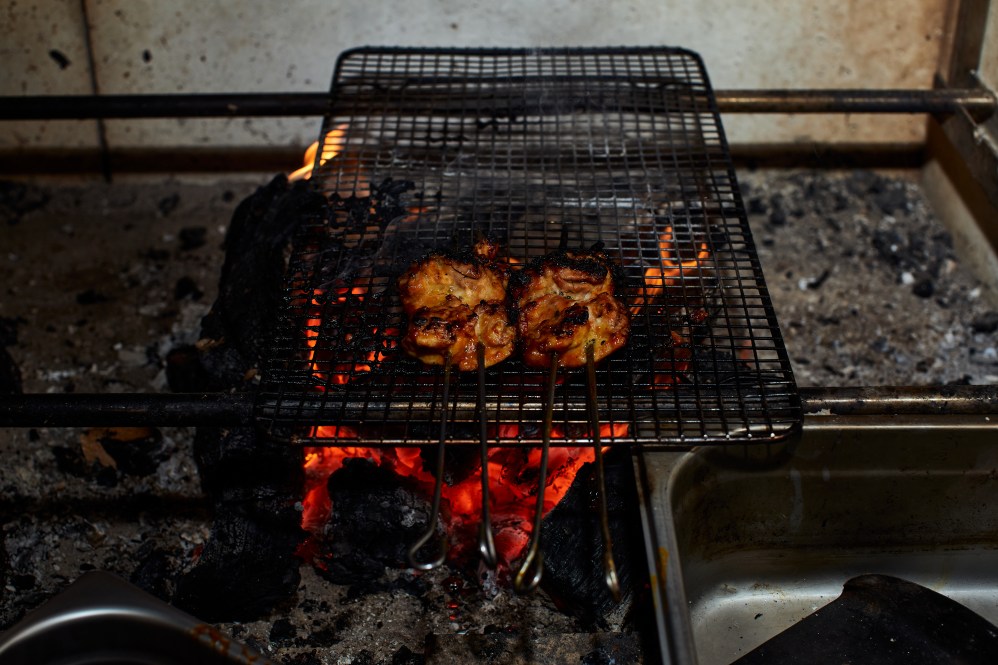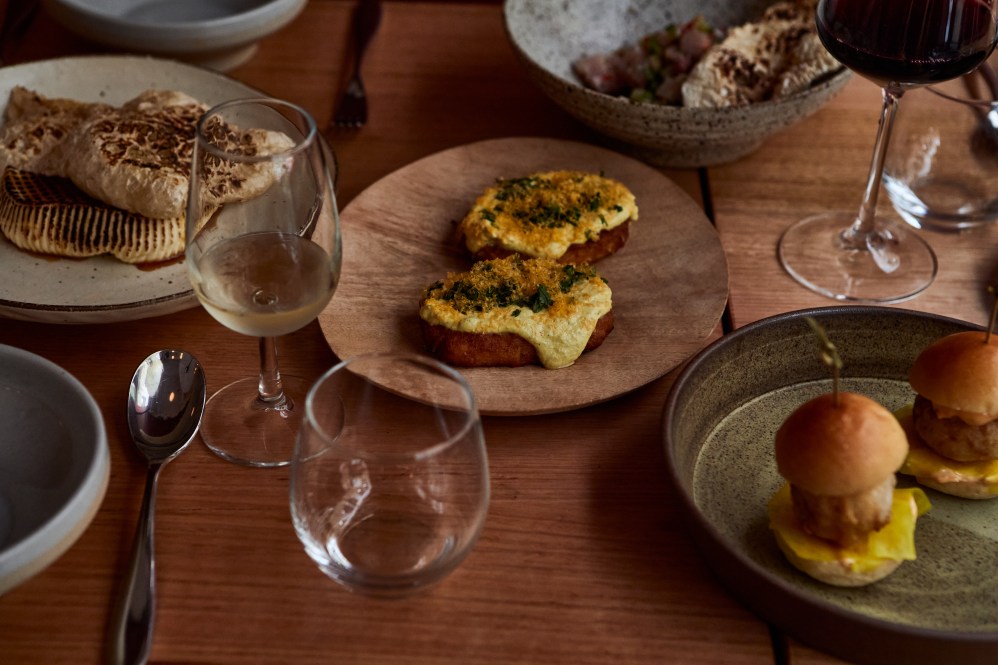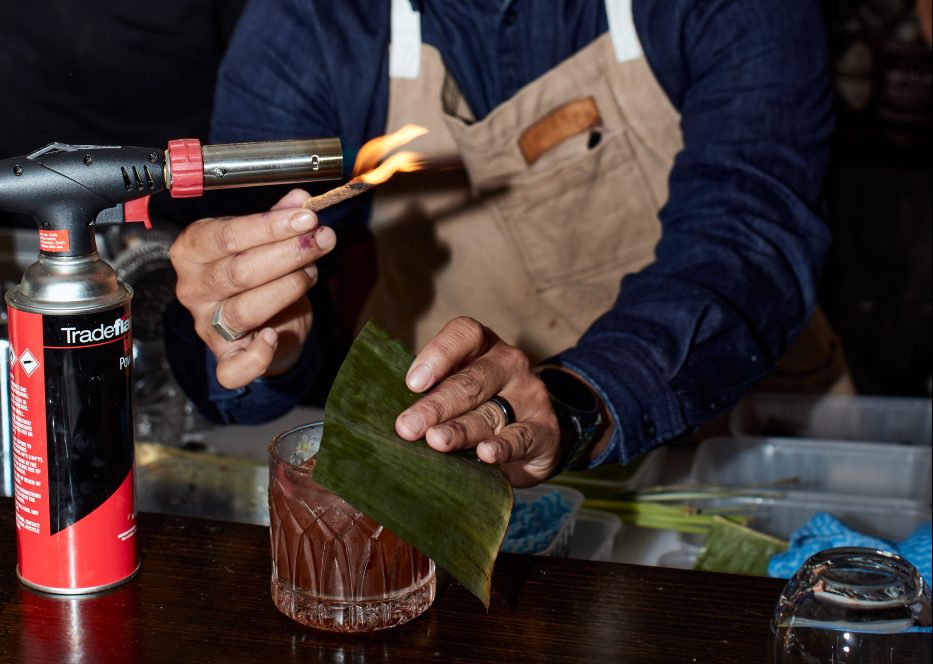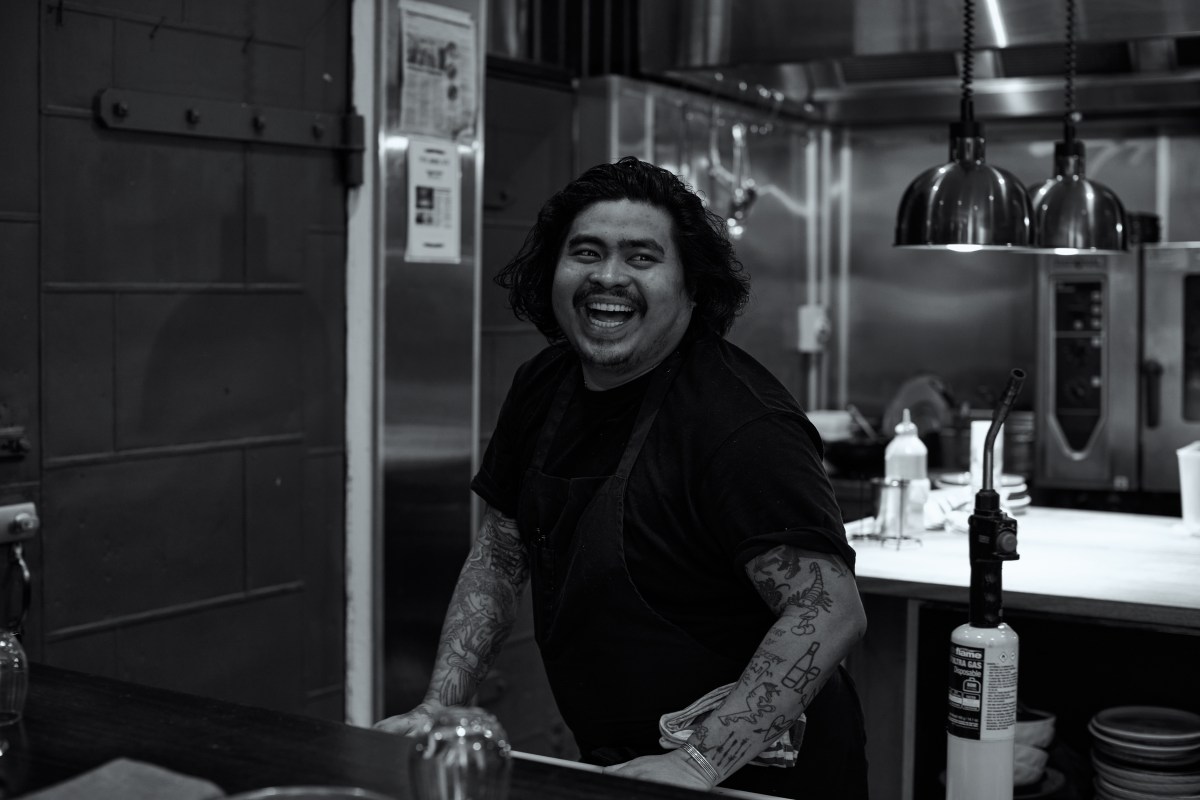With each new restaurant opening comes a need to categorise it. Is it Italian, Vietnamese or Middle Eastern? But there’s a broader term: modern Australian, which is what Serai in Melbourne uses as a self-descriptor.
What was once an umbrella term for Euro-centric dishes and techniques now reflects the reality of the culinary landscape, which is all-encompassing and an exciting place to be.
Ross Magnaye has been called the poster boy of Filipino food in Australia, but what he’s doing at Serai is less about labels and more about doing things his way. “People automatically think I have a link to the culture because my background is Filipino- Spanish, but we use Australian ingredients with Filipino flavours and influences,” says the chef. “When people ask me about the food we do, I always say modern Australian.”
Magnaye speaks to Hospitality about cooking with a brand-new medium (fire), tweaking traditional flavours and creating a restaurant that’s as much about fun as it is food. Serai is a team effort between Chef Ross Magnaye and business partners Shane Stafford (Rice Paper Scissors/Sister) and Ben Waters.
The warehouse-esque restaurant is located on Racing Club Lane in Melbourne’s CBD, but could also be scouted out by its booming soundtrack (possibly Nirvana, depending on the day) or the smell of produce hitting the grill.
It’s the same wood-fired grill that is the focal point of Serai’s kitchen, and was a simultaneous investment and risk for staff; specifically, Magnaye. “I had never cooked over a wood fire in my life before opening,” he says.
“I was nervous about cooking with fire because it’s so hard to control. But wood-fired cooking is tied to the Filipino thing because it’s traditional. Gas is expensive, so cooking with wood or coal is cheaper.”

While Magnaye was “super confident” with his dishes, the grill was a serious learning curve for the chef at this point in his career. “You don’t want to be stagnant in what you do, otherwise you’ll be bored,” he says. “You have to think about the wetness of the wood, the humidity, how much food is on the grill — it’s a challenge for us,” he says.
“You make mistakes but find ways to be more efficient. I think the smartest thing we’ve done is made the food super simple. The grill is a pain in the ass, but it changes the food completely and it’s worth it. I can’t go back to gas.”
Red gum is the primary wood of choice to fuel the grill along with applewood chips which are used for smoking purposes such as the kangaroo found in the kinilaw. “We start the fire an hour before service, but it depends on how hot you want it,” says the chef. “We recently did an event with Tom Sarafian and the fire was smoking out the whole alleyway the moment I came in.”
Serai’s menu is broken down into a format that reflects the current ‘trend’ of eating: raw bar, snacks, crispy things, small dishes, large plates and sides. It’s a choose-your own adventure for diners, who can come in for a couple of dishes or “ideally — the set menu”.
Sinuglaw, lumpia and kare-kare are all sounding boards for Magnaye-designed dishes and indicate the inspiration behind flavour profiles or techniques, but it’s best to expect the unexpected and definitely not the original. “It’s nostalgic for people who recognise the flavours, but it’s not the same,” says the chef. “Longganisa is a breakfast dish of fried rice, sausage and egg, but we serve it as a sauce with ’nduja on the wood-fired calamari.”

Another example is the McScallop, which sees pandesal (a bread roll) stuffed with an Abrolhos scallop, crab fat sauce and atchara (green papaya). “The crab sauce is a condiment that’s usually served with grilled meats and seafood and atchara is a traditional pickle,” says Magnaye.
Wood-fired and large plates cover everything from Skull Island prawns slathered in buro butter and Western Plains lechon with smoky pineapple palapa (a sweet and spicy condiment) to Gippsland lamb ribs with adobo sauce and vegan options, too.
“We’re doing tocino heirloom pumpkin which is basically treating the pumpkin like meat by glazing it,” says the chef. “Banana ketchup is in it too and it’s served with confit garlic. We’re also doing Filipino empanadas with a spicy escabeche sauce and will change some of the side dishes. There are specials, too, so we definitely move with the seasons.”
Those who know Magnaye won’t be surprised to see minimal-intervention wines take pride of place on the wine list. Serai’s by-the-glass offering spans 15 or so options from Das Juice’s pet-nat to Brave New Wines’ Riot Girl.
While there’s a focus on local producers, European makers feature as well. “The by-the-glass list is important because we want people to be able to try different wines, so that’s why we have a big list,” says Magnaye. “The hospo crowd tends to go for the more high-end, funky bottles.”
Serai’s cocktail list has also been a hit and heroes ingredients such as ube and calamansi. “People haven’t really heard of these things or tried them before — it’s unique,” says Magnaye.

House calamansi-cello is paired with Four Pillars Shiraz gin, Prosecco and cardamom tincture for a spritz, with a spin on an Old Fashioned combining Kasama rum with coconut fat-washed bourbon, pimento dram and single origin coffee bitters. Not to skip on the Ube Wan Kenube, which sees Don Papa No.7 Mt. Kanlaon rum combined with crème de cacao, ube coconut and bitters.
Serai is Magnaye’s first restaurant and marks his return to Melbourne’s dining scene after calling time on Rice Paper Scissors and working in Bulgaria. It’s been short and sweet so far for Serai, which secured a hat and a score of 15/20 in its first week — despite not having a toilet roll holder.
“I didn’t think about getting a hat when we opened, we just want people to have a good time,” says the chef. “It’s not your typical one-hat restaurant; the food is good, the music is loud and everyone is having a good time. It’s just about having fun — it’s a restaurant. Come get loose, come to Serai.”

